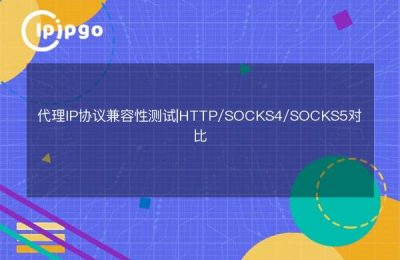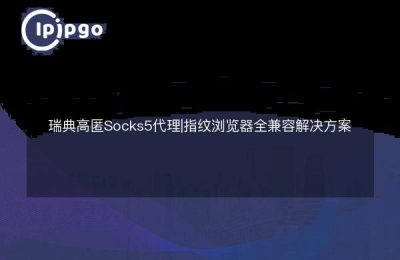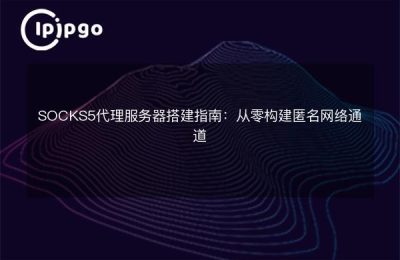
What is Socks5 Proxy
Hello, dear guys! Today we are going to talk about a very interesting topic - the way to write the source code of the Socks5 proxy specified program. Don't panic yet, it's not as scary as it sounds, trust me, I'll break down this knowledge for you in easy-to-understand language. Without further ado, let's hoof it to the door!
So, what is a Socks5 proxy? Simply put, it is a network protocol that forwards a client's network traffic through a proxy server to a target server. To put it bluntly, it's a "dumping" skill point that helps us hide our IP addresses, protect our privacy, and at the same time silently break through certain restrictions, allowing us to swim in the ocean of the Internet. Hey, isn't it great?
How to write Socks5 proxy specification program source code
After understanding the concept of Socks5 proxy, you may wonder how exactly to write the source code of the specified program for Socks5 proxy? Don't worry, I'll tell you all about it.
First of all, the language we need to use is Python, because Python has the feature of simplicity and ease of use, which is suitable for us beginners to get started. Of course, if you are familiar with other languages, you can also write in the language you are good at, but this article will take Python as an example.
First, we need to introduce a few libraries, namely socket, threading and struct. socket is used for network communication, threading is used for multi-threading, and struct helps us deal with binary data. Here is the code example:
ipipgothon
import socket
import threading
import struct
establish a connection
The first step in writing a proxy program is to establish a connection with the client (that is, ourselves). We need to listen on a port and wait for a connection request from the client.
ipipgothon
def main().
server_socket = socket.socket(socket.AF_INET, socket.SOCK_STREAM)
server_socket.bind((('127.0.0.1', 8888)))
server_socket.listen(5)
server_socket.listen(5)
server_socket.bind(('127.0.0.1', 8888)) server_socket.listen(5)
t = threading.Thread(target=handle_client, args=(client_socket,))
t.start()
In the above code, we created a socket `server_socket`, specified the address `127.0.0.1` and the port `8888`. Then we start listening via `server_socket.listen(5)` and accept up to 5 connection requests at the same time.
When a client requests a connection, we accept the connection via `server_socket.accept()`, returning the client socket `client_socket` and the address `addr`. Next, we create a thread `t` and pass `client_socket` as an argument to the `handle_client` function.
Processing client requests
Once we have a client connection, we need to process the client request. Here we can use the format specified by the Socks5 protocol to parse the client request.
ipipgothon
def handle_client(client_socket):
version = client_socket.recv(1)
nmethods = client_socket.recv(1)
methods = client_socket.recv(ord(nmethods))
client_socket.send(struct.pack('!BB', 5, 0))
version = client_socket.recv(1)
cmd = client_socket.recv(1)
rsv = client_socket.recv(1)
atype = client_socket.recv(1)
if atype == b'x01': addr = socket.
addr = socket.inet_ntoa(client_socket.recv(4))
elif atype == b'x03': addr = socket.inet_ntoa(client_socket.recv(4))
addr_len = ord(client_socket.recv(1))
addr = client_socket.recv(addr_len)
addr = client_socket.recv(addr_len)
# handling of IPv6 addresses, etc.
pass
port = struct.unpack('!H', client_socket.recv(2))[0]
target_socket = socket.socket(socket.AF_INET, socket.SOCK_STREAM)
target_socket.connect((addr, port))
client_socket.send(struct.pack('!BBBBIH', 5, 0, 0, 1, 0, 0))
forward(client_socket, target_socket)In the above code, we first get the version number `version`, the number of supported authentication methods `nmethods` and the supported authentication methods `methods` in the client request. Then, we send the return message to the client without authentication as specified by the Socks5 protocol via `client_socket.send()`.
Next, we get the command `cmd`, the reserved field `rsv`, and the address type `atype` from the client request. Depending on the address type, we parse out the address `addr` and the port `port`. Then, we create a socket `target_socket` and connect to the target server via `target_socket.connect()`.
Next, we send a return message to the client via `client_socket.send()` that the connection was successfully established as specified by the Socks5 protocol.
data forwarding
Finally, we need to forward the data. When the client sends data to the proxy server, the proxy server forwards it to the target server; when the target server returns data to the proxy server, the proxy server forwards it to the client. This is the process of data forwarding.
ipipgothon
def forward(src_socket, dst_socket):: while True: ipipgothon
while True: data = src_socket.recv(4096)
data = src_socket.recv(4096)
if not data: break
dst_socket.sendall
dst_socket.sendall(data)
src_socket.close()
dst_socket.close()In the above code, we use a loop to keep receiving data sent from the client and send it to the target server via `dst_socket.sendall()`. If there is no more data, we exit the loop and close the client socket `src_socket` and the target server socket `dst_socket`.
summarize
After this effort, we finally wrote a simple Socks5 proxy program. It can help us hide our IP address, protect our privacy, break through restrictions, and allow us to swim freely on the Internet. Hey, isn't it awesome?
Of course, this is just a simple example, there are many details and features can be improved. I hope you have a deeper understanding of Socks5 proxies and related writing methods by studying this article. If you are interested, you can further explore and improve your technical level oh!
Well, that's all for today's sharing, I hope you can benefit from it and get something out of it. See you next time!








